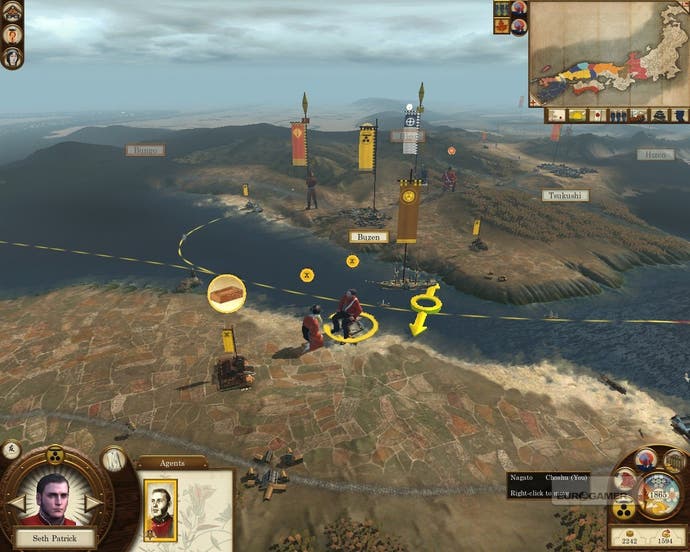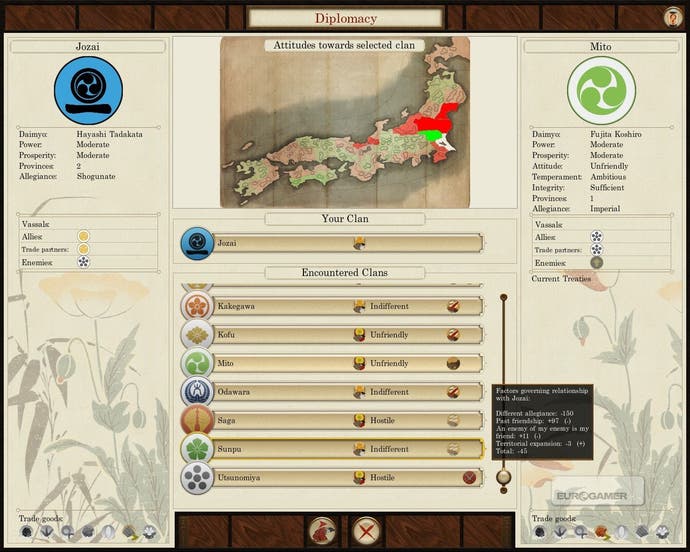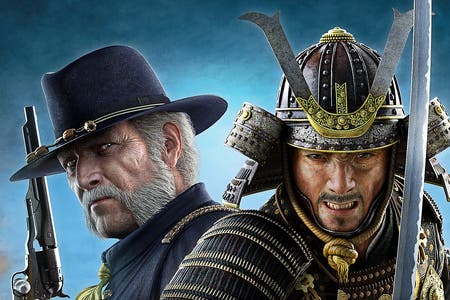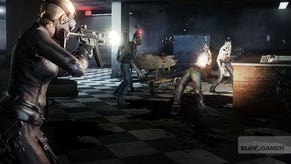Total War: Shogun 2 - Fall of the Samurai Review
Here today, Shogun tomorrow.
For Japanese soldiers fighting in the mid-1860s, modern life really is rubbish. This is because their traditional approach to warfare, faced with the rapid advancement of military technology, now means they spend their time marching in neat and orderly rows toward Gatling guns. They often do this across wide open spaces and in broad daylight. From an aerial perspective - perhaps while directing cavalry towards a flank or ordering cannons to bombard a castle - you might very well imagine them as a line of men patiently queuing up to die. The industrial revolution hasn't just created the production line, it's also made butchery much more efficient.
It's no wonder that your general populace resents technological progress, with each new level of advancement only making them unhappier. This forces you to strike a balance between embracing the gains afforded by new inventions, and the growing resentment of a conservative populace. Nevertheless, the temptation may be all too much for the would-be warlord - because Fall of the Samurai opens up a toybox of terror for Total War gamers. There are so many new gadgets to get to grips with in this new standalone expansion, from pocket derringers to pocket battleships, you'll just have to convince your subjects to get with the times.

While Fall of the Samurai may be all about change - the sudden inrush of ideas and technology to Japan - it's immediately familiar to any Total War player, and represents more of a careful, composed and considered step forward than any great leap. On the surface it may be a new setting with different units and a few alterations to play, but what Creative Assembly has also done here is make subtle alterations under the hood, ironing out bugs and looking toward areas of the game that have been lacking. The naval battles, for example, finally have some real wallop to them, feeling both more elegant and more exciting than before, not least because they present players with the option to take manual control of their ships and cannons.
This new first-person-perspective control of some units and battlefield artillery feels like a strange and rather incongruous addition. I can't argue against it being harmless fun, but every time you miss you'll feel guilty for failing to match the standards of the men under your command. I imagine many players will leave the gunning to the gunners, instead preferring to swing their ships around in wide and deadly arcs, hoping to line up another broadside.
As in other Total War games, if you do choose to get this close to your troops you'll appreciate just how brutal the battles can get. You'll see soldiers collapse under volleys of rifle fire before writhing in the mud, trying to reach for their weapons. Fall of the Samurai has even more moments of tragic beauty and spectacular slaughter. A well-timed naval barrage from offshore can send both horses and men flying; ships and castle walls alike buckle and snap under the weight of lead shot, while nothing quite matches the sight of thousands of soldiers snaking their way around the complex, many-levelled fortifications of a citadel, crawling towards its keep.
There's much less focus on family management and inheritance this time around. With even a long campaign spanning only 12 years, you'll have little interest in finding out what kind of a man your Daimyo's son grows into. But this doesn't mean that games are any shorter, as each turn of play now spans a couple of weeks, something that makes a lot more sense for a fast-moving, rapidly modernising Japan. It also gives you plenty of time to explore an interesting, many-limbed tech tree that introduces everything from copper-plated warships to the Gold Standard.

Sprinkled among the gearwheels and guns are a few new agents who, as long as they find success in your service, you'll get to shape and to guide. Political agents help to convert enemy realms or conquered regions of opposing ideologies. Foreign veterans assist with the training and recruitment of units, but nevertheless remain terribly weak to the charms of geisha: women who are somehow able to single-handedly distract entire armies, provided they're paid enough. It's tremendous fun watching these bizarre characters amass strange skills and retainers as they go about their business. Right now I have a political agitator with a baseball bat and a ninja with a pistol.
With so many unusual units, inventions and industrial innovations, Fall of the Samurai very much leaves you feeling spoiled. You'll likely want to experiment with everything in the custom battle creator. immediately hurling cannonballs at ninja to marry the old and the new and find out just how effective all this stuff is. It's a shame that the improved AI is still a little clunky on occasion, though it mostly copes with all these new units very well. Nevertheless, in one battle I found the computer player sending its units, one at a time, straight toward a wide line of my deadly sharpshooters, all the while holding the rest of its slowly-dwindling army behind a rise. I wasn't sure if this tactic was supposed to exhaust my ammunition or my patience.
I still have quite a few gripes with Creative Assembly's interfaces and how they choose to present their information. More than a few pieces of important news are delivered with nothing but a dismiss button below them and could do with more contextual options or information. A fleet can bombard your holdings, but the game won't tell you what was damaged or how seriously; or you can receive news that an entire clan has been wiped out, but not where, how, or by whom. Then, when another clan arrives to negotiate trade routes with you, there's no way for you to check where the clan actually lives or where the proposed route would run.
The latter is a particularly strange omission as the standard diplomatic screen features a map of the country which presents helpful information about any region or faction you move the mouse over, though keeping up to date with this is your business alone. Each turn, this map can hold many new surprises and I wouldn't mind someone in my court passing a subtle note my way whenever a neighbouring clan decides to take a dislike to me, rather than opening up my diplomacy options to find the people next door have suddenly (and inexplicably) shifted their mood to "Hostile" and begun quietly massing troops.

Although Creative Assembly hasn't quite overcome all of Total War's traditional shortcomings, this latest interface nevertheless feels better, much as the combat AI feels better and those battles at sea feel much, much better. The endgame, often a micromanagement slog as everyone turns against you, also presents better choices. Depending upon your faction choice and personal ambitions, you might find yourself chasing specific objectives, fighting for or even representing one of the country's major powers as part of a greater and more purposeful civil war, or simply choosing to strike out on your own.
If it hasn't ironed out all of the creases that mark the series, Fall of the Samurai has at least gone some way to smoothing them - and with a particularly unusual slice of history as its subject, it's a fine choice as either a standalone expansion or a welcome addition to Shogun 2. I could certainly wish for a few more improvements or perhaps that greater leap forward, but I'm not one to turn my nose up at progress.









